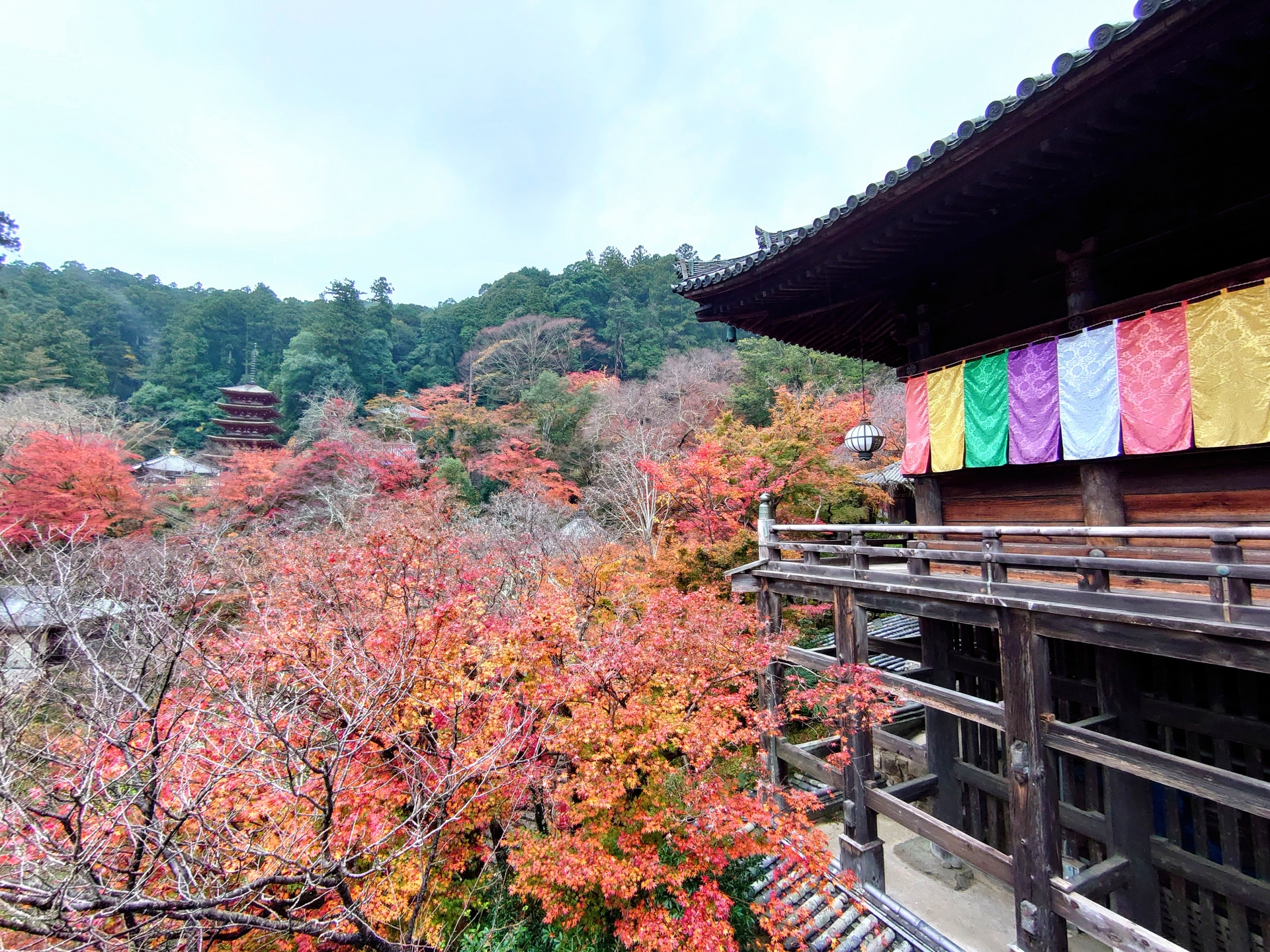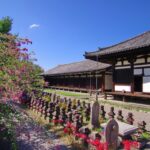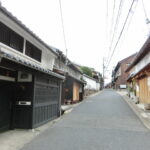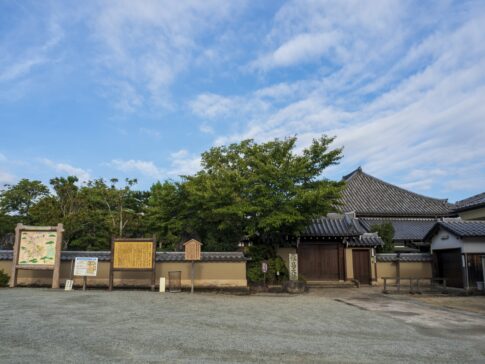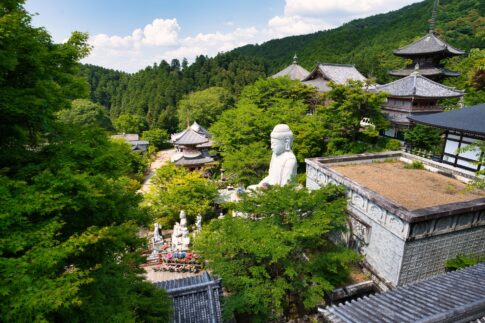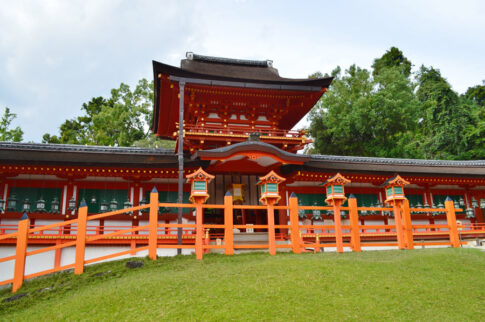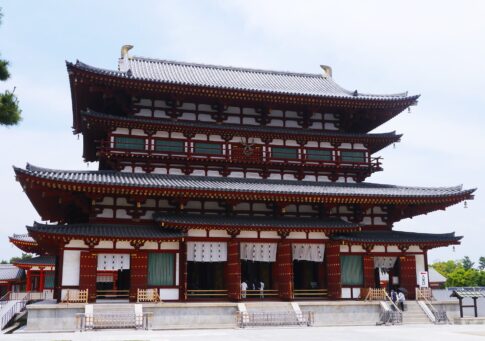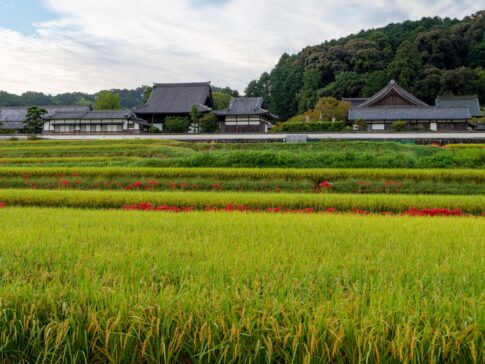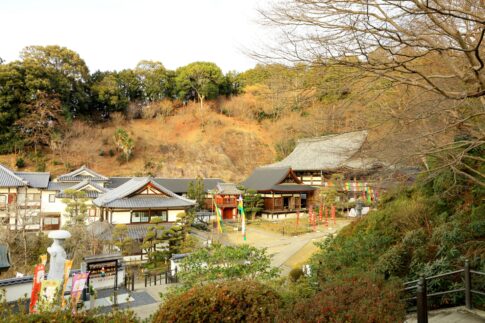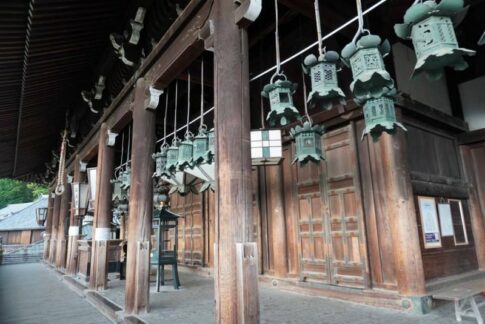Hasedera Temple is old and famous temple with a long history.
A temple of flowers that has attracted people since ancient times.
Let’s walk around the temple, thinking back to those days.
We recommend to learning their basic information before visiting, it will be more fun!
What you need to know before visiting Hasedera Temple
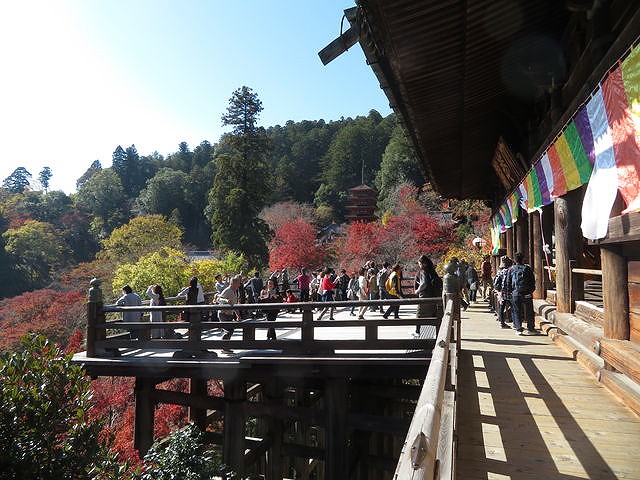
1. Basic Information
Hasedera Temple is the head temple of the Buzan School of Shingon Buddhism.
Also known as “the temple of flowers,” Hasedera Temple is beautifully decorated with flowers from season to season.
The temple is famous for the 399 steps leading from the Niomon Gate to the main hall and the largest wooden statue of the eleven-faced Avalokitesvara Bodhisattva in Japan.
Hasedera Temple dates back to the first year of Shucho (686).
Domyō Shōnin enshrined the bronze tablet Hōke Sesshōzu at Nishi no Oka on Hatsuseyama.
It is also due to the year 727 (Shinki 4) when Tokudo Shonin first built the main image of the eleven-faced Avalokitesvara Bodhisattva, the eleven-faced Avalokitesvara Bodhisattva.
Later, “Hatsuse pilgrimages” became popular among the general populace during the Heian period (794-1185), and the bustle of these pilgrimages has continued to the present day.
2. Overview
Hasedera Temple containss following buildings and things.
- Main Hall(National Treasure)
The main hall is a large south-facing hall built on a precipitous cliff in the middle of Mt.
The main hall (inner sanctuary) has a gabled roof with a tile-roofed gabled roof and a gabled gabled roof with a tile-roofed gabled roof.
- Hombo(Important Cultural Property)
The main hall and shoin (study room) are the fundamental training hall for kyoso and kyoso.
It was built in 1667 with a donation from the Tokugawa Shogun, but was destroyed by fire in 1911.
The present hall was rebuilt in 1924.
The hall was registered as a Tangible Cultural Property of Nara Prefecture on March 30, 2012.
- Ascending Corridor(Important Cultural Property)
Built in 1039 (Choreki 3) during the Heian period (794-1185) by Chotomi Nobuakiyo, the chief priest of Kasuga Taisha Shrine, in gratitude for the healing of his son’s illness.
The lower and middle corridors were rebuilt in 1894 (Meiji 27) and are hung with elegant Nagatani-shaped lanterns.
- Niomon Gate(Important Cultural Property)
This gate is the main gate of Hase-ji Temple.
It is flanked on both sides by statues of Nio and on the top of the gate are three statues of Shakyamuni and sixteen arhats.
The present building was rebuilt in 1894.
The inscription “Hasedera Temple” is in the imperial hand of Emperor Goyozei.
- Five-storied Pagoda
This is the first five-story pagoda built in postwar Japan in 1954, and is called the famous pagoda of the Showa period.
The five-storied pagoda is a well-shaped pagoda in the purely Japanese style.
The tan color of the pagoda body, the gold color of the sorin and the brown color of the light cypress bark roof are in harmony with the background, and the pagoda radiates luminosity.
- Hon-Hasedera Temple
The temple is called Hon-Hasedera Temple in contrast to the current main hall (Konchoya-ji Temple), since Domei Shonin built a seisha here in accordance with Emperor Temmu’s imperial request.
In 686, the first year of the Shucho Era (686), Domyō Shōnin cast the “Copper Plate Buddhist Picture of the Sūsōzu (Thousand Buddhas and Many Treasures)” for the healing of Emperor Tenmu’s illness, and enshrined it as the principal image of the temple.
- Shuhouzou
The Shuhouzou stands on the site of Seijo-in, one of the six monasteries of Hase-ji Temple.
It is open to the public in spring and fall to display the treasures of Hase-ji, including national treasures and important cultural properties.
3. Highlights
Next, we will explain about some of the best parts of them.
- Main Hall
The main hall of the temple is a representative large-scale construction by the Tokugawa Shogunate, and was designated as a National Treasure in December 2004 as an important building that played a central role in the Kannon cult in Japan.
It is also called Kannon-do or Daihikaku.
It has a 9-ken frontage and a 9-ken depth, with a tile roof. The main hall (inner sanctuary) and the main sanctuary (outer sanctuary) are combined into a single building, which is called a “twin hall” style, with a stone-paved earthen floor (place of worship) in between.
The south side is a bold irimoya style with a complex roof structure called yatsumune-zukuri.
The view from the stage is magnificent, and the subtle undulations of the temple grounds below can be seen at a glance.
- Niomon Gate and Ascending Corridor
Standing in front of the Niomon Gate of Hase-ji Temple, one is first struck by its size.
The massive roof seems to be approaching you.
The Nioimon gate was built between 986 and 1011 A.D. during the reign of Emperor Ichijo, but the current gate was rebuilt in 1894.
On both sides of the gate are statues of Niou, and on the upper floor are enshrined the three images of Shakyamuni and the sixteen arhats.
On the east side of the gate, wisteria trees bloom from mid-May to mid-June.
After passing through the Niomon gate, the ascending corridor extends ahead.
This corridor consists of three buildings (upper, middle, and lower), and round lanterns called “Hase-gata” are hung from the ceiling.
The approach to the temple at the time of its construction was located near “Ninomoto-no-sugi,” which will be introduced later, and was moved to its present location when people began to follow the path of Sugawara Michizane, who was said to have run up to the Kannondō Hall.
Looking up at the Niomon gate from below, one can see the complexity of its construction. The intricate decorations are also worth noting.
At ascending corridor, visitors can view winter peonies from January to February and peonies from late April to late May.
- The Bronze Tablet Hōke Sesshōzu
It is said that Domei Shonin of Kawaradera Temple built the pagoda in 686 to pray for the healing of Emperor Temmu’s illness, and that it was enshrined in a stone chamber on the western hillside near the present five-story pagoda.
The relief depicts a scene from the Lotus Sutra, in which a three-story pagoda springs out of the ground and a thousand Buddhas gather in the clouds to praise the Buddha’s teachings.
The lower section contains a 319-character petition for the construction of the pagoda, and is the only artifact that tells the story of the founding of Hasedera Temple.
Summary
Today we introduced one of the most famous temples in Japan.
When you travel Nara, please do not miss it!
